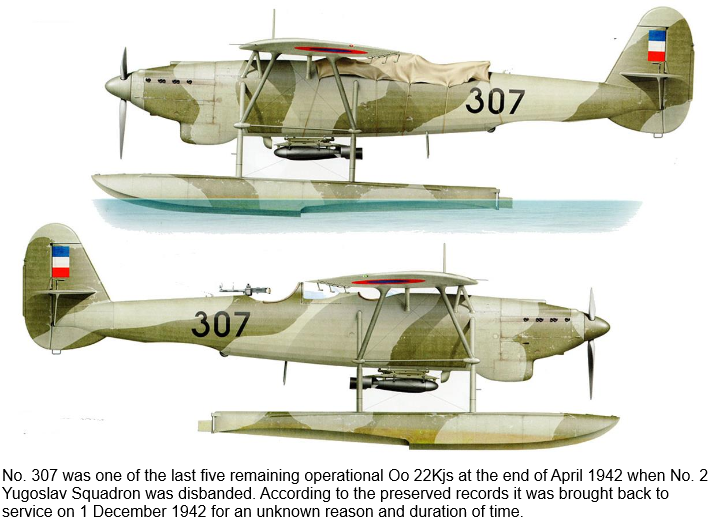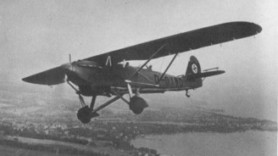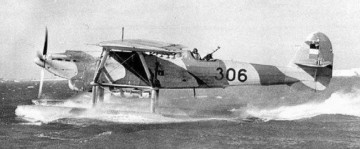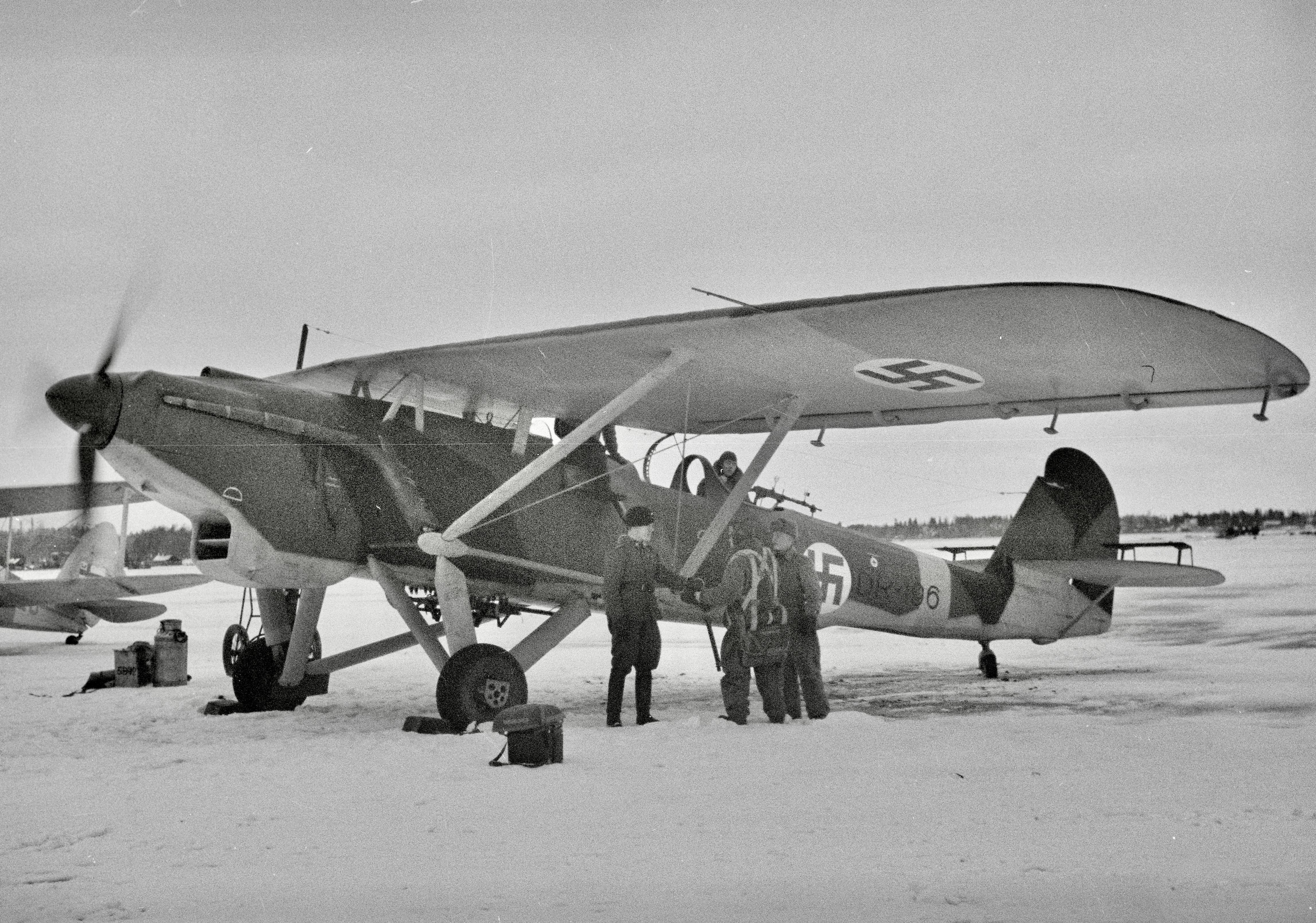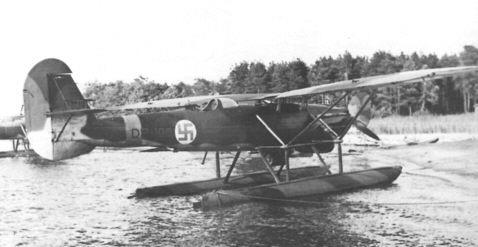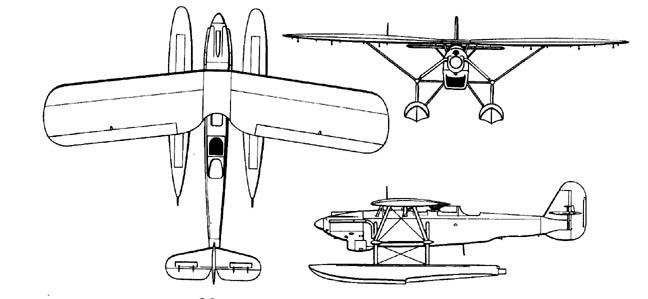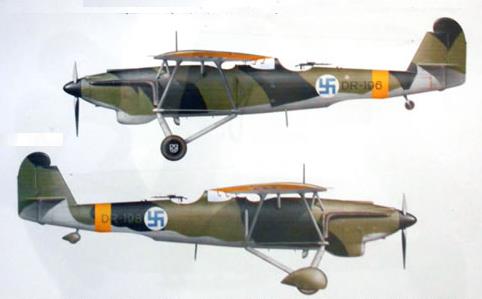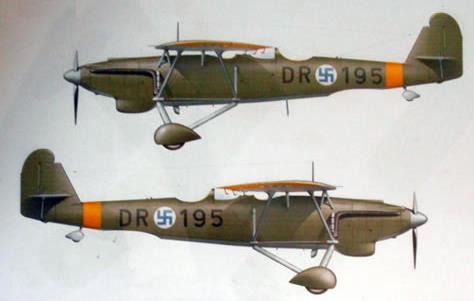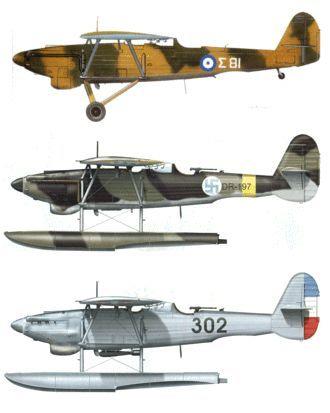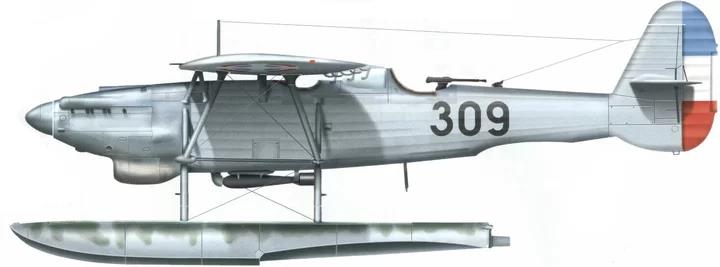Used by the Yugoslavian Naval Air Force in 1941
Units : 1st Hydroplane Command, 2nd Hydroplane Group, 20th Hydroplane Squadron (6 Do-22) at Orahovac
2nd Hydroplane Command, 3rd Hydroplane Group, 25th Hydroplane Squadron (6 Do-22) at Zlarin i Višovac
Total production 29 : 4 to Latvia,4 to Finland ( 3 ex Latvian + the original Land version), 12 to Greece, 12 to Yugoslavia
Versions: Kg - Greece, Kj - Yugoslavia, Kl - Latvia
Dornler-Seeflugzeug Do 22.
Von den Dornier-Meta II bauten G. m. b. H., Friedrichshafen a. B., bringen wir nachstehend eine Beschreibung der bisher an der Oeffent-lichkeit noch nicht gezeigten Type,
dem Do 22, einem dreisitzigen Mehrzweckflugzeug (Seefernaufklärer. Bomben-, Torpedoflugzeug) mit zwei Schwimmern.
Flügel pfeil- und leicht V-förmig, Vorder- und Hinterkante parallel, Flügelenden abgerundet, zweiholmig, in Duralbauweise, mit Stoff bespannt. Jede Flügelhäfte ist durch
2 Stiele abgestrebt. Die Querruder mit Innenausgleich können durch eine besondere Vorrichtung auch als Landeklappen betätigt werden.
Rumpf geschweißtes Stahlrohrgerüst. Zur Erzielung einer aerodynamisch günstigen Form sind an dem Rumpfgerüst Duraluminspante und Längsprofile befestigt, über
welche dann die Stoff- bzw. Metallbeplankung gelegt ist. Metallbeplankt sind die Einstieg Öffnungen für die Besatzung, die Verkleidung des Motors sowie der Schußkanal
des unteren MGs. Der übrige Teil des Rumpfes ist stoffbespannt. Knüppel hauptsteuer beim Führer, Hilfssteuer für Beobachter. Führer. Beobachter und Schütze sitzen hintereinander. Der Führer hat außer der Führung des Flugzeuges die Betätigung des vorderen, durch den Propellerkreis
schießenden MGs. Der Beobachter bedient Kamera, FT sowie bei Ausfall des Führers die Hilfssteuerung des Flugzeuges. Der Schütze bedient das obere, auf einem
Drehring gelagerte Doppel-MG und das aus dem unteren Schußkanal nach hinten unten schießende MG.
Bei Verwendung als Bombenflugzeug erhält der Beobachter die
Bombenabwurfvorrichtung und das Zielgerät, welches an Stelle der Kamera über der Rumpfbodenöffnung angebracht wird. Wird das Flugzeug für Torpedoangriff
eingesetzt, so erhält der Pilot die Abwurfvorrichtung für den Torpedo, wäh-§rerid der zweite Mann hinteren Stand die Verteidigung der Maschine nach hin-ten oben und unten übernimmt bzw. ganz in Wegfall kommt.
Lei chtmeta lisch wimmer, durch 8 Schotten in 9 wasserdichte Abteilungen unterteilt, sind durch Stahlrohr so abgestrebt, daß unter dem Rumpf Raum für Abwurf von
Torpedos und Bomben freibleibt.
Höhenflosse ist durch die Seitenflosse durchgeführt und mittels zweier Stahlrohrstreben zum Rumpf abgestützt und zur Seitenflosse mittels Stromliniendrähten
abgefangen. Die Höhenflosse ist während des Fluges vom Führer verstellbar. Als Ausgleich für das Höhenruder ist oberhalb der Höhenflosse ein Hilfsflügel angeordnet.
Das Seitenruder trägt an seinem oberen Ende einen Ausgleichslappen.
Für den Antrieb sind Motoren von 700—900 PS vorgesehen. Hauptbetriebsstoffbehälter 640 1 mit Schnellablaß in abgeschottetem Raum vor dem Führer. 2
Zusatzbehälter von je 100 1 im Flügel. Oel-behälter auf dem Motorgerüst.
Spannv/eite 16,2 m, Länge 13 m, Höhe 4,72 m, Flügelfläche 45 m2. Leergewicht 2328 kg, Zuladung normal 1022 kg, maximal 1672 kg. Höchstgeschw. in Volldruckhöhe mit Hispano-Suiza Y 320 km/h, Landegeschw. 82 km/h. Steigzeit von
0—4000 m 9 Min., Gipfelhöhe 9200 m. Höchstgeschw. mit Gnöme-Rhöne K 14 325 km/h, Landegeschwindigkeit 82 km/h, Steigzeit auf 4000 m 8A Min., Gipfelhöhe 9300 m.
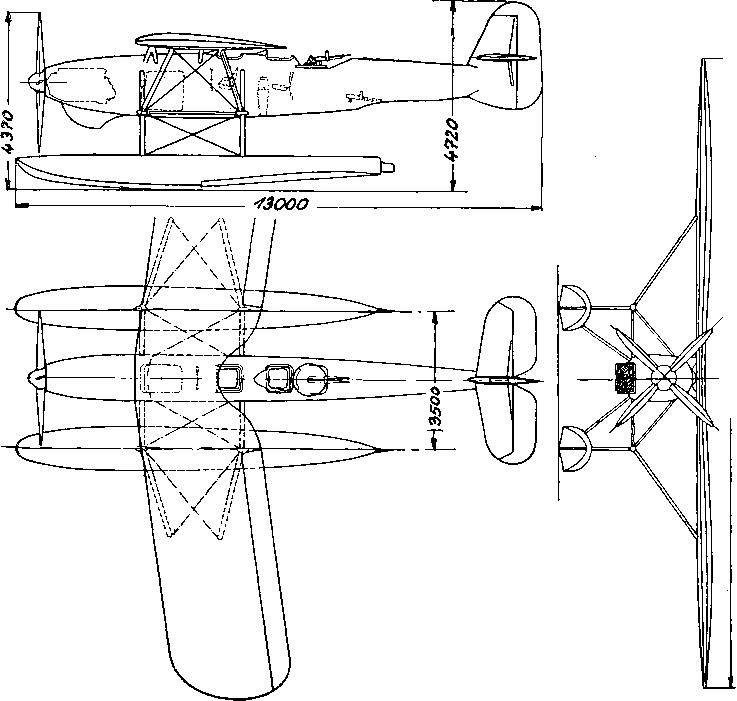
| Type |
Kl and Finnish version |
Kj |
Kg |
| Engine |
Hispano Suiza 12 Ydrs with 3-bladed VDM metal propeller |
| Dimensions |
Length , height , span , wing area ,Length 13.13 m (12.90 m on wheels), height 4.83 m (4.70 m on wheels), span 16.2 m, wing area 45 m2 |
Length 13.13 m , height 4.83 m , span 16.2 m, wing area 45 m2 |
Length 13.13 m , height 4.83 m , span 16.2 m, wing area 45 m2 |
| Weights |
Empty 3000 kg (2760 kg on wheels), flying weight 4100 kg (4000 kg on wheels) |
Empty 3000 kg , flying weight 4100 kg |
Empty 3000 kg , flying weight 4100 kg |
| Performance |
Max. speed 350 km/h (360 km/h on wheels) at 4,000 m; 276 km/h at sea level, climb to 1000 m 3 min 12 sec., to 2000 m - 6 min 30 sec., to 3000 m 9 min 24 sec., 4,000 m - 13 min., service ceiling 7000 m, range 1500 km |
Max. speed 350 km/h at 4,000 m; 276 km/h at sea level, climb to 1000 m 3 min 12 sec., to 2000 m - 6 min 30 sec., to 3000 m 9 min 24 sec., 4,000 m - 13 min., service ceiling 7000 m, range 1500 km |
Max. speed 350 km/h at 4,000 m; 276 km/h at sea level, climb to 1000 m 3 min 12 sec., to 2000 m - 6 min 30 sec., to 3000 m 9 min 24 sec., 4,000 m - 13 min., service ceiling 7000 m, range 1500 km |
| Armament |
A fuselage mounted 7.7 mm m.39 MG for the pilot and 2x7.7 mm L-33/36 MGs for the gunner; RMS racks under the fuselage for 2x50 kg bombs or a 200 kg depth charge |
A fuselage mounted 7.7 mm MG for the pilot and 2x7.7 mm MGs for the gunner |
A fuselage mounted 7.7 mm MG for the pilot and 2x7.7 mm MGs for the gunner |
A three-seat high-wing braced monoplane, the Do 22 was powered by an Hispano-Suiza 12Ybrs 12-cylinder liquid-cooled engine rated at 775 h.p. for take-off and 860 h.p. at 13,120 ft. The metal two-spar fabriccovered wing was braced to a tubular structure on the sides of the fuselage to which could be attached wheels, floats or skis, and the fabric-covered oval-section welded steel-tube fuselage incorporated a tunnel beneath the rear cockpit from which a ventral machine gun could be 'fired. Single or twin machine guns could be mounted on a Scarff ring over the rear cockpit, and a fixed gun could be provided to fire through the airscrew. The three cockpits were mounted in tandem, the pilot's cockpit being situated beneath a cut-out in the wing centre section, and a folding transparent cover being provided for the centre cockpit which housed the observer with dual controls.
The Do 22 soon attracted orders, and production machines were manufactured at Friedrichshafen with some components being provided from Altenrhein. The first order for 12 examples of the twin-float version was placed on behalf of the Royal Yugoslav Naval Air Service, a similar order being received from Greece, and further aircraft being ordered by the Latvian government. The first production Do 22 floatplane was flown on July 15, 1938, and deliveries to Yugoslavia began before the end of the year, being followed in 1939 by deliveries to Greece. The first production landplane, the Do 22L (D-OXWD), was flown on March 10, 1939, but no export orders for this version were fulfilled, and there is no evidence to indicate that Do 22s built against the Latvian order, although completed, were delivered to that country before its incorporation in the Soviet Union.
A suffix letter was applied by Dornier to the designation of the floatplane in order to differentiate between examples built against different contracts (i.e. Do 22Kg indicating a Greek contract machine and Do 22Kj and Do 22K1 indicating Yugoslav and Latvian contract machines respectively). The aircraft delivered to Greece equipped the 12th Naval Co-operation Squadron which had 10 Do 22s on strength when that country was invaded by Italian forces. Most Royal Hellenic Air Force Do 22s were lost in action during the weeks that followed, but eight of the
12 Yugoslav machines reached Egypt in April 1941, equipping No. 2 (Yugoslav) Squadron which began patrol operations over the Mediterranean from Aboukir under the control of No. 230 Squadron on June 3, 1941. One of the Do 22s was used as a source of spares and the remainder continued their patrol activities until the unit was disbanded on April 23, 1942. On 6 Sep, 1941 Finland bought four Do 22Kls from Germany. These aircraft were almost brand new, even though they were bought as second hand. The aircraft were flown by Finns from Friedrichshafen (Germany) on 25 Sep via Prague and Tallinn to Helsinki Malmi airfield, where they landed on 1 Oct.Used by the Finnish airforce units : LeLv 6 (1942-44), Osasto Jauri/PLeLv 6 (1944). Total flying time 404 h 20 min
| Type |
Werk.Nr |
Registration |
History |
| Kl |
|
D-OXWF, DR-195 |
|
| Kl |
|
D-OXWG, DR-196 |
|
| L |
|
D-OXWD, DR-197 |
First flight March 10, 1939 |
| Kl |
|
D-OXWH, DR-198 |
|
| Kl |
|
|
|
| Kg |
|
|
|
| Kg |
|
|
|
| Kg |
|
|
|
| Kg |
|
|
|
| Kg |
|
|
|
| Kg |
|
|
|
| Kg |
|
|
|
| Kg |
|
|
|
| Kg |
|
|
|
| Kg |
|
|
|
| Kg |
|
|
|
| Kg |
|
|
|
| Kj |
|
|
|
| Kj |
|
|
|
| Kj |
|
|
|
| Kj |
|
|
|
| Kj |
|
|
|
| Kj |
|
|
|
| Kj |
|
|
|
| Kj |
|
|
|
| Kj |
|
|
|
| Kj |
|
|
|
| Kj |
|
|
|
| Kj |
|
|
|
